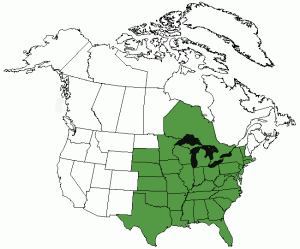Red Mulberry
Red Mulberry – Morus Rubra
Growing up in the Northeast I had a friend with a fruit tree in his backyard. I was amazed at this one tree that was able to produce so many “black berries”. No one in the neighborhood knew what the tree was but they were happy to eat the fruit. His mother even baked pies with its fruit. It turned out to be a red mulberry (morus rubra) a native plant of the Americas which is a close relative to the white mulberry which is an invasive plant from China. Trying to find out exactly what the tree was led me to a life-long passion to be able to identify wild plants.
Description:
The red mulberry is a deciduous tree, growing to 30 – 60 feet tall with a trunk that is 18” -24” in diameter. Its Leaves form in three general shapes: normal leaf shape, mitten shaped (single lobed) and three-lobed. The leaves are simple, alternate, and up to 7″ – 8″ long. The leaves are broad, egg shaped, and lobed. The base of the leaf is square, as if it has been cut off abruptly. The tip of the leaf is pointed. The leaves have sharply serrated margins. The upper leaf surface is rough to the touch. The lower surface is soft and covered with short hairs. The petioles are 1″ to 1 1/2″ long and produce a milky fluid when broken. The catkins that bear stamens are 1″ – to 3″ long. The catkins that bear pistils are 1″ to 1 1/2″ long. Red mulberry has aggregate fruits that are 1″ to 1 1/2″ long. The fruits are juicy and have a dark purple color. The bark of the red mulberry is grayish with flattened, either scaly ridges or smooth. The flowers are relatively inconspicuous: small, yellowish green or reddish-green. Male and female flowers are usually on separate trees although they may occur on the same tree.
Location:
Native red mulberry is rarely found away from the shade of mature, moist woods. where it prefers moist, wooded slopes, wood’s edges, and shady roadways. It is very tolerant of shade and is usually found as a small, understory tree. Many times you may find this native tree alongside streams where the soil is moist. Interestingly, because birds absolutely love the small blackberry sized fruit, they eat then scatter the seeds near and far so you may find red mulberry trees anywhere the soil is moist enough for the plant.
 Range:
Range:
Red Mulberry, is native to eastern North America, from Ontario and Vermont south to southern Florida and west to southeast South Dakota and central Texas.
Edible:
The fruit of the mulberry and young shoots are the edible parts of this plant. The fruit, called drupes, look just like blackberries. They are typically about 1″ long. They ripen between late June through July. The fruit of the red mulberry can be eaten raw, juiced (very tasty) or cooked into pies, breads etc. The one problem there is in picking the fruit is that mulberry fruit in general, (red mulberry, white mulberry, etc) are favorites of just about all birds as well as small mammals. Often times they will get the fruit just before it ripens. The young shoots can be boiled until tender (1 water change in the process) and served with butter.
Notes of Interest:
The red mulberry tree is a native tree of the Americas. The white mulberry tree which is, what I consider an invasive species, readily hybridizes with it. So, many times what you will come across is a hybrid tree – still all good to eat but once again the hand of man screws up nature.
I have read that the unripe fruit should not be eaten because they contain hallucinogens 1
The wood of red mulberry is strong and has been used in furniture and fence posts 2
1. Edible Wild Plants, Sterling Publishing page 200
2. Field Guide to Edible Wild Plants – 2nd edition, Stackpole Books, page144